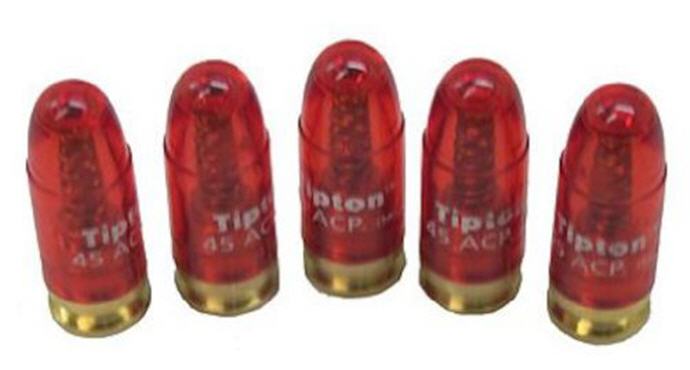Is It Safe To Dry Fire My Gun?
Drying firing your gun to practice trigger control and other shooting fundamentals is an enjoyable and pretty much free way to improve your pistol shooting accuracy. Yet dry firing is more than just pulling the trigger on an empty chamber…
What Is Dry Firing?
Dry firing is “dropping the hammer on an empty chamber”…
In other words, activating the firing mechanism with no ammunition in the gun. There are a couple of different mechanisms that could be used in your firearm but all of them involve a firing pin, and with dry firing that pin will strike nothing but air or an inert device called a snap cap.
Let’s cover some of the basics of dry firing here but first address a very popular question among pistol shooters: “Is it SAFE to dry fire my gun?”, meaning, will it do the gun any harm?
The short answer is “probably”, but keep reading, there is more to it than that.
- Never dry fire a weapon that you do not own without asking permission first – whether the handgun belongs to someone else or at a gun store. It’s possible that gun should not be dry fired but even if you KNOW it’s safe for the gun it’s just proper courtesy.
- Yes, dry firing seems to go against the basic rules of firearm safety – “always treat a gun as if it’s loaded”. If it were loaded we wouldn’t pull the trigger just to see what it was like. Keep reading…
- Always verify that the gun is empty. No magazine, nothing in the chamber. Double check.
- Nevertheless, always point the gun in a safe direction. Yes, “safe direction” probably means you will put a hole in a wall if a round really did fire but make sure no one is lined up with the barrel and that INCLUDES the potential for someone to be on the other side of a WALL.
- It is generally assumed that .22 LR rimfire weapons should NOT be dry fired without an appropriate snap cap.
- Check the user manual (online if necessary) to see if it’s safe to dry fire your particular handgun model. Don’t trust a random internet post. If it’s not in the manual, call the manufacturer. In the case of Glock, they at least give 1/2 an answer in their FAQ.
Snap Caps Are Always Required When…
Even when your pistol is approved for dry firing, I have never come across a manufacturer that did not say that for continuous or “excessive” dry firing you should use a snap cap. The brand I use is Tipton.
Perhaps you are wondering what “excessive” is? Well, that’s one of the bonuses to watching the video below…
Why Dry Fire Your Pistol?
Dry firing is a really good way to practice trigger control. If you go the whole nine yards to try to do it right, you are actually practicing not just your trigger control, but also your:
- Stance
- Grip
- Draw/Presentation
- Sight Alignment
- Sight Picture
- Breathing
- Follow Through (partly)
Yeah, exactly. You can be practicing almost all of the 8 fundamentals of pistol shooting. Granted, with follow through there is not going to be any recoil to deal with (there BETTER NOT BE!) yet you can use this as an opportunity to concentrate on trigger reset.
Video
Here is a short video on the basics of dry firing, and as an incentive for you to watch it I have a couple of tips I included in the video that I did not mention here 🙂
